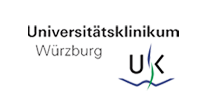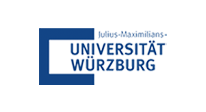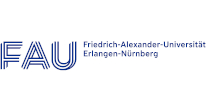
Exploring Advances in Biofabrication: Highlights from the DGBM Meeting in Jena
In the picturesque city of Jena, Germany, the Annual Meeting of the German Society for Biomaterials (DGBM) recently played host to an impressive gathering of SFB/TRR225 members. This vibrant community of researchers and scientists came together to share insights, foster collaboration, and push the boundaries of biomaterial research.
A noteworthy highlight of the event was the Biofabrication session, a focal point of the conference that promised to delve into the latest advancements in the field. Expertly chaired by Tomasz Jüngst, this session underscored the collaborative spirit and dedication of the biomaterial research community. It provided a platform for intensive discussions, knowledge sharing, and exploration of cutting-edge developments in biofabrication.
As we reflect on this remarkable assembly of minds at the DGBM meeting in Jena, we extend our heartfelt appreciation to all participants for their valuable contributions to advancing the field of biomaterial science.
Spotlight on Our Participants:
Nathaly Chicaiza Cabezas
Presentation: “3D Bioprinting of vasculature based on induced vasculogenesis”
Nathaly Chicaiza Cabezas and her colleagues from Würzburg, Germany, presented groundbreaking research on 3D bioprinting of vasculature using induced vasculogenesis. Their work holds significant potential to impact regenerative medicine and tissue engineering by enabling the creation of intricate vascular networks within engineered tissues.
Dr. Rainer Detsch
Talk: “Tailored hydrogels as a platform technology for various biomedical applications: What is required to create an alginate-based bioink library?”
Dr. Rainer Detsch from Erlangen, Germany, shared insights into tailored hydrogels and their applications in biomedical fields. His work lays the foundation for the development of versatile bioinks, essential for 3D bioprinting and tissue engineering. Additionally, his research explores the impact of alternating electric fields on cellular interactions in the context of bone remodeling.
Prof. Dr. Jürgen Groll
Plenary Talk: “Application oriented evolution of Melt-Electrowriting: Immunomodulation and Microvasculature as examples”
Prof. Dr. Jürgen Groll, based in Würzburg, Germany, delivered an enlightening plenary talk on the evolution of Melt-Electrowriting. His research showcases the technology’s applications in modulating the immune response and engineering microvasculature—crucial for tissue survival and function.
Sven Heilig
Poster: “Novel bioreactor for multi-layer and multi-fluid perfusions of channels inside hydrogels”
Sven Heilig, hailing from Würzburg, Germany, presented an innovative bioreactor concept for perfusing channels inside hydrogels. This innovation promises to enhance the development and functionality of engineered tissues by mimicking natural nutrient perfusion and waste removal.
Florian Hofmann
Talk: “Microfluidic printheads for multi-material extrusion-based bioprinting”
Florian Hofmann and collaborators from Würzburg and Erlangen, Germany, discussed the development of microfluidic printheads for multi-material extrusion-based bioprinting—an essential step toward achieving complex, multi-material tissue constructs.
Prof. Dr. Leonid Ionov
Talk: “Biofabrication with fibers: How to combine 3D bioprinting and programmed fiber spinning”
Prof. Dr. Leonid Ionov, based in Bayreuth, Germany, shared his expertise in biofabrication with fibers. His work explores innovative methods of combining 3D bioprinting and programmed fiber spinning to create intricate tissue structures.
Prof. Dr. Tomasz Jüngst
Talk: “Biofabrication of hybrid tubular constructs with adjusted mechanical properties for the development of small diameter vascular tissue models”
Prof. Dr. Tomasz Jüngst and his team discussed the biofabrication of hybrid tubular constructs with tailored mechanical properties. This research holds promise for the development of small-diameter vascular tissue models, crucial for cardiovascular studies.
Hsuan-Heng Lu
Poster: “ADA-GEL bioink system with tailored oxidation degree of ADA for biofabrication approaches”
Hsuan-Heng Lu’s work from Erlangen, Germany, focuses on the ADA-GEL bioink system and its tailored oxidation degree, enhancing biofabrication capabilities with precise control over the printing process.
Camilla Mussoni
Talk: “Biofabrication of a glomerular filtration barrier model through a biomimetic fibrous membrane to mimic functional core components”
Camilla Mussoni, in collaboration with researchers from Würzburg and Erlangen, Germany, presented her research on biofabrication of a glomerular filtration barrier model—a biomimetic approach with potential advancements in kidney tissue engineering.
Jonas Röder
Poster: “Fabrication of oxidized-alginate-microgels by applying microfluidics”
Jonas Röder and his colleagues from Erlangen and Jülich, Germany, discussed the fabrication of oxidized alginate microgels using microfluidics—a groundbreaking approach for creating bioactive materials with precise control over structure and composition.
Dr. Natascha Schaefer
Talk: “Nano-fibers can improve cell performance, acting as easy-modifiable fillers to upgrade bio-inks.”
Dr. Natascha Schaefer’s research from Würzburg, Germany, explores the use of nano-fibers as fillers to enhance the performance of bio-inks, opening new avenues for improving the quality and functionality of 3D-printed tissues.
Sebastian Wohlrab
Poster: “Simulation of homogeneous equivalents to real cells”
Sebastian Wohlrab, in collaboration with Professor Stephan Gekle from Bayreuth, Germany, presented research on simulating homogeneous equivalents to real cells—an important step in understanding cellular behavior and interactions in engineered tissues.
These outstanding participants have made significant contributions to advancing the field of biofabrication. Their dedication to innovative research promises a future where we can engineer tissues and organs with unprecedented precision and functionality. We eagerly anticipate further progress and breakthroughs in this exciting field, so stay tuned for more updates and discoveries in biofabrication.
Beyond the scientific discussions and presentations, we hope our attendees had the opportunity to experience the unique charm of Jena, often referred to as the City of Light. Situated along the picturesque river Saale and surrounded by stunning mountains and breathtaking natural landscapes, Jena provided a serene and inspirational backdrop for our gathering.
In conclusion, the Annual Meeting of the German Society for Biomaterials in Jena was a resounding success. It not only showcased the remarkable work of our participants but also served as a beacon of hope for the future of scientific conferences. We extend our heartfelt gratitude to all attendees, presenters, and sponsors for making this event memorable and impactful. We eagerly anticipate future meetings and collaborations that will continue to advance the field of biomaterials. Thank you for being part of this remarkable journey.
Join Us at Booth #3!
If you’re attending the Annual Meeting of the German Society for Biomaterials (#DGBM) in the beautiful city of Jena, we invite you to visit us at Booth #3, where the SFB/TRR225 team awaits with open arms.
We’re excited to engage in insightful conversations with fellow biomaterial enthusiasts, researchers, and curious minds like yourself. This conference provides the perfect opportunity













